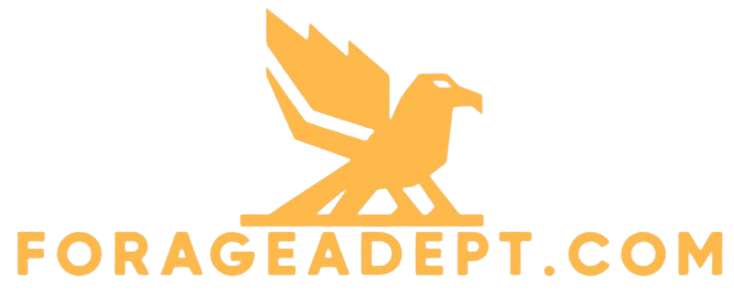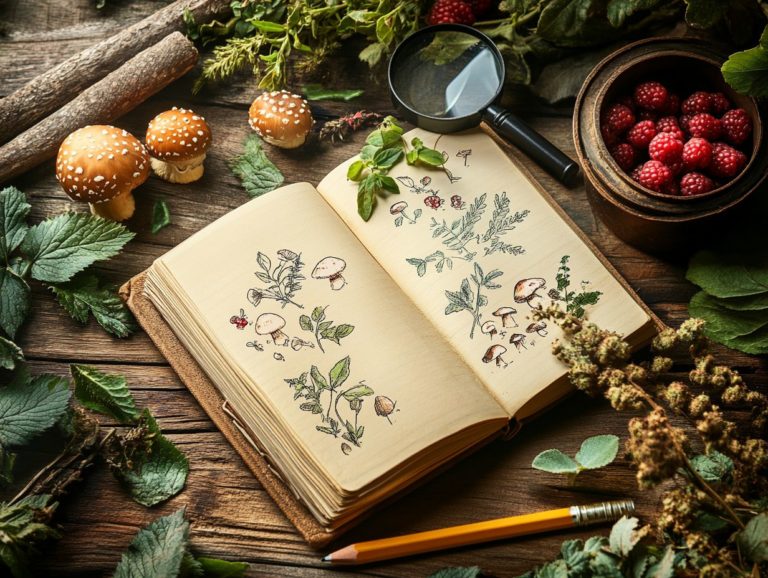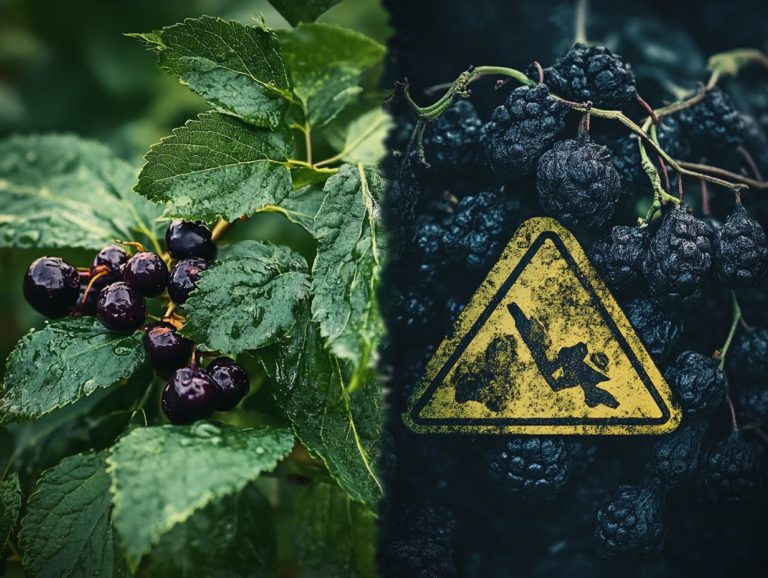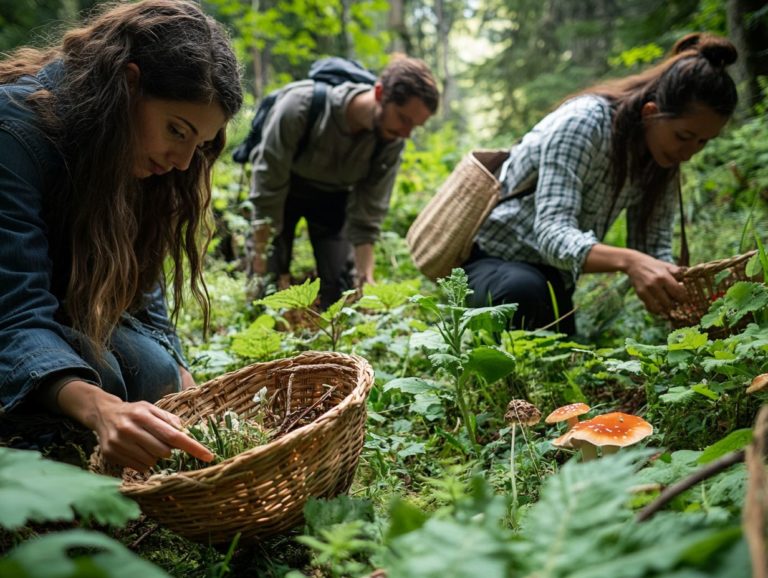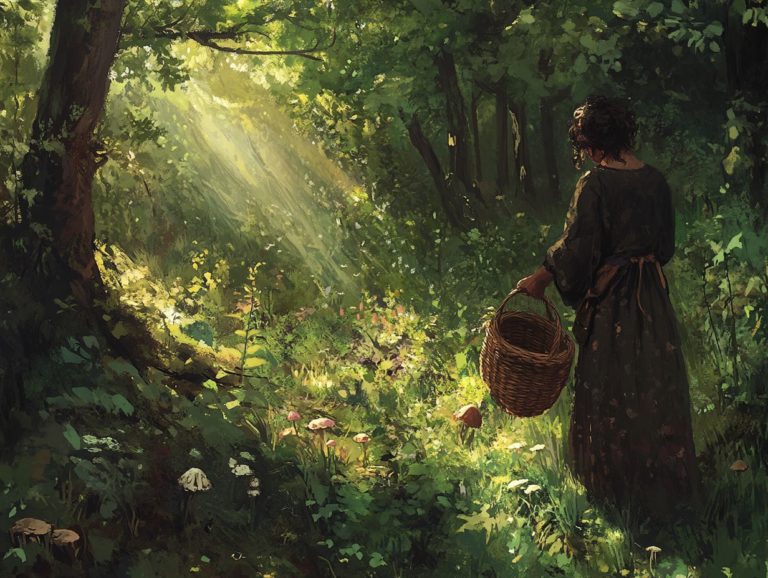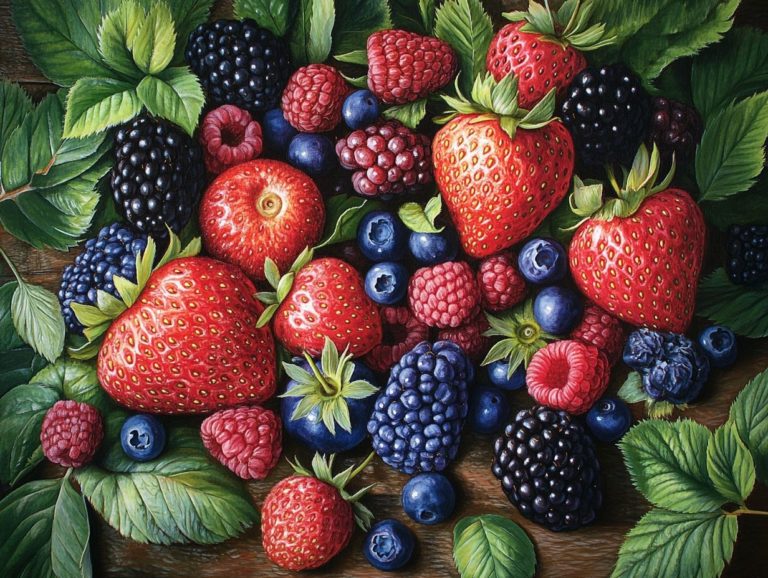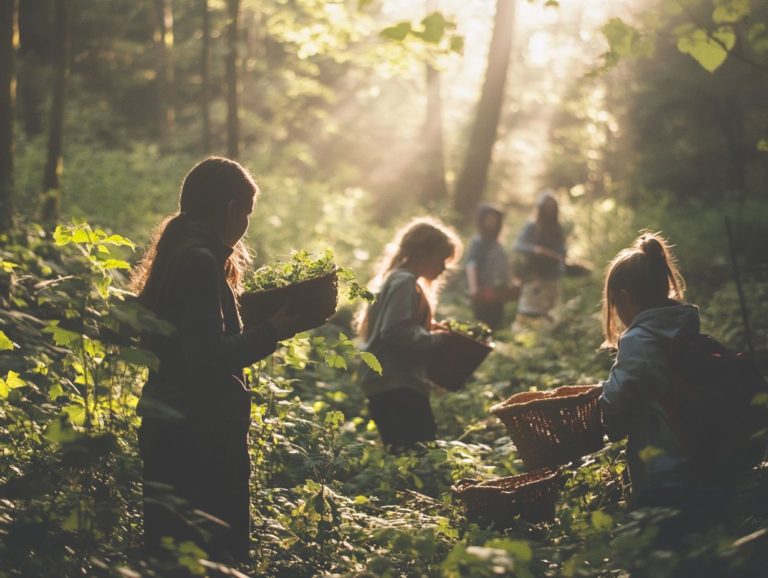What Are Common Mistakes in Foraging?
Foraging is more than just a trend; it serves as a fulfilling avenue to reconnect with nature and unearth the hidden gems within your surroundings.
The benefits are abundant, ranging from the nutritional value of wild edibles to the positive impact of sustainable harvesting on the environment. However, foraging does present its own challenges, such as accurately identifying safe plants and steering clear of common mistakes.
This guide will walk you through the essentials of foraging, placing a strong emphasis on safety, ethics, and resources that will elevate your experience. No matter your experience level, you ll find valuable insights to help you navigate the great outdoors with confidence.
Contents
- Key Takeaways:
- Benefits of Foraging
- Common Mistakes in Foraging
- Foraging Safety
- Foraging Ethics
- Foraging Resources
- Frequently Asked Questions
- Curious about common foraging mistakes?
- How can I avoid misidentifying plants while foraging?
- Is foraging from contaminated areas a common mistake?
- What are the consequences of damaging the environment while foraging?
- Why is it important to forage ethically?
- What should I do if I am unsure about the safety of a plant while foraging?
Key Takeaways:
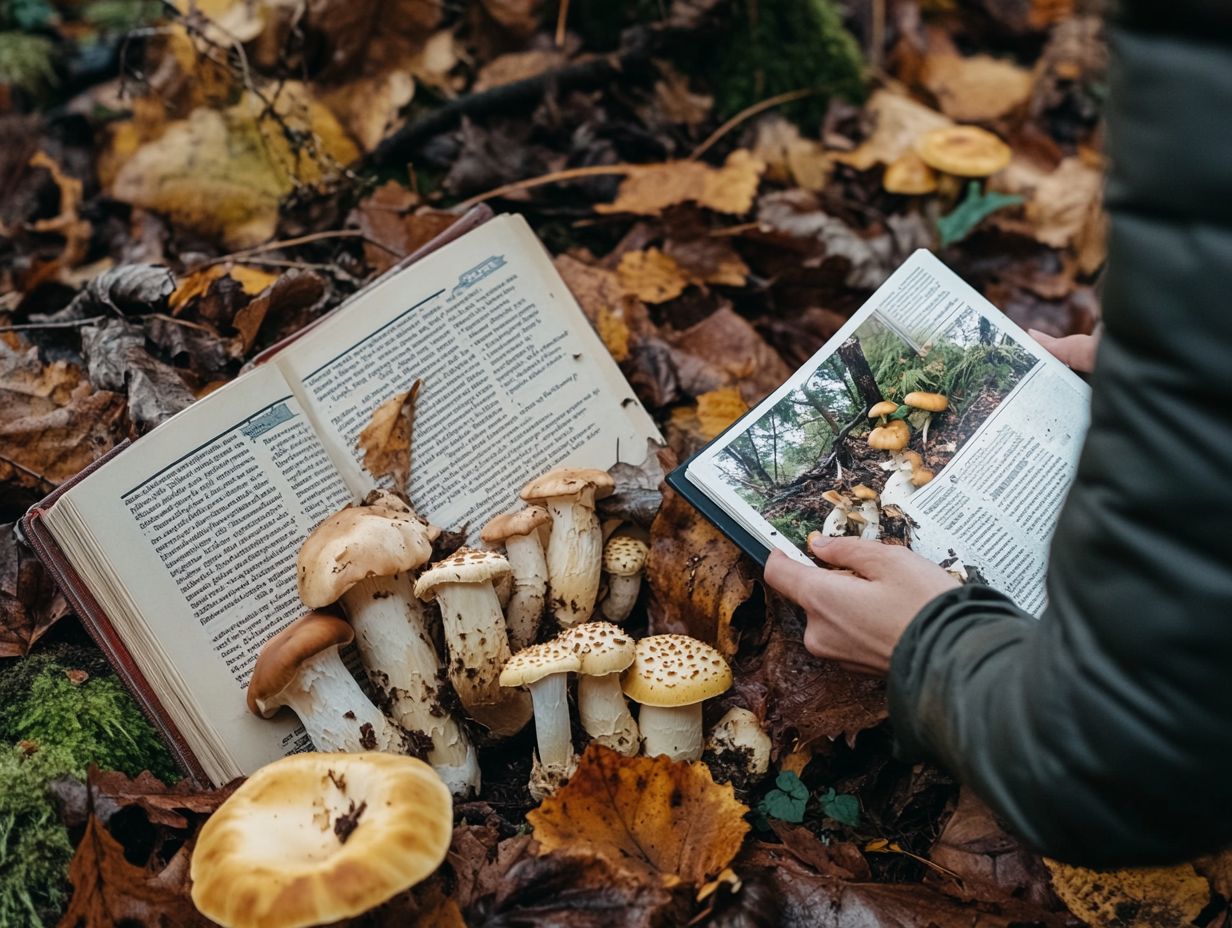
- Not properly identifying plants can lead to dangerous mistakes in foraging. Always research and consult with experts before consuming any wild plants.
- Overharvesting and damaging the environment can have long-lasting negative effects on foraging locations. Always follow ethical guidelines and practice responsible harvesting.
- Always prioritize safety while foraging. Be aware of potential hazards such as poisonous plants and dangerous terrain, and follow guidelines to ensure a safe foraging experience.
Act now to ensure a safe and responsible foraging experience!
What is Foraging?
Foraging is the art of searching for and gathering wild edible plants, mushrooms, berries, and nuts in their natural habitats. You’ve likely noticed its surge in popularity during the coronavirus pandemic, as many seek sustainable food sources to enhance their food security.
This timeless skill connects you to nature and opens the door to a world of *herbaceous and woody plants* thriving in various ecosystems, fostering a profound appreciation for the outdoors and honing your *plant identification skills*.
For centuries, foraging has been how people found food, and it remains relevant today, especially as you explore innovative ways to diversify your diet amidst uncertainty. Commonly sought wild edibles like *dandelion greens*, *wild garlic*, and various *berries* each offer unique flavors and nutritional benefits. Accurately identifying these plants is essential, as some have *toxic lookalikes* that can pose health risks.
The resurgence of foraging supports local food systems and helps you feel more self-sufficient while instilling a sense of *resilience*. It also reinforces the importance of *sustainable practices*, ensuring that future generations can continue to enjoy the bounty of nature.
Benefits of Foraging
Foraging offers you a wealth of benefits that go far beyond merely collecting food. It enhances your *nutritional intake*, heightens your *environmental awareness*, and fortifies *community connections* through shared experiences, whether in urban landscapes or rural settings.
By diving into foraging activities, you gain access to a *treasure trove of wild edible plants*, while also learning about sustainable practices and the *ecological footprint* of your choices. This journey fosters a profound connection to the land and local ecosystems, enriching both your *palate* and your *perspective*.
Nutritional and Environmental Benefits
The nutritional benefits of foraging are significant, as wild edible plants often provide *higher levels of vitamins and minerals* than their cultivated counterparts. By foraging, you tap into a *fresh, organic source* of sustenance that can enhance your overall health and food security.
This practice nurtures your body and fosters a greater appreciation for *biodiversity* the variety of different plants and animals in an ecosystem and ecological balance, encouraging sustainable behaviors that protect the environment.
Among these wild edibles, greens like *dandelion and stinging nettle* are packed with essential nutrients such as *vitamins K and A*, along with powerful *antioxidants* crucial for maintaining optimal health. California’s *Field Garlic* adds a unique flavor to your dishes while boasting *antibacterial properties* and supporting *heart health*.
Engaging in foraging deepens your understanding of the *natural world* around you, emphasizing the importance of preserving *natural habitats*. This, in turn, contributes to a rich tapestry of *interdependent species* that rely on one another for survival in *fragile ecosystems*.
Common Mistakes in Foraging
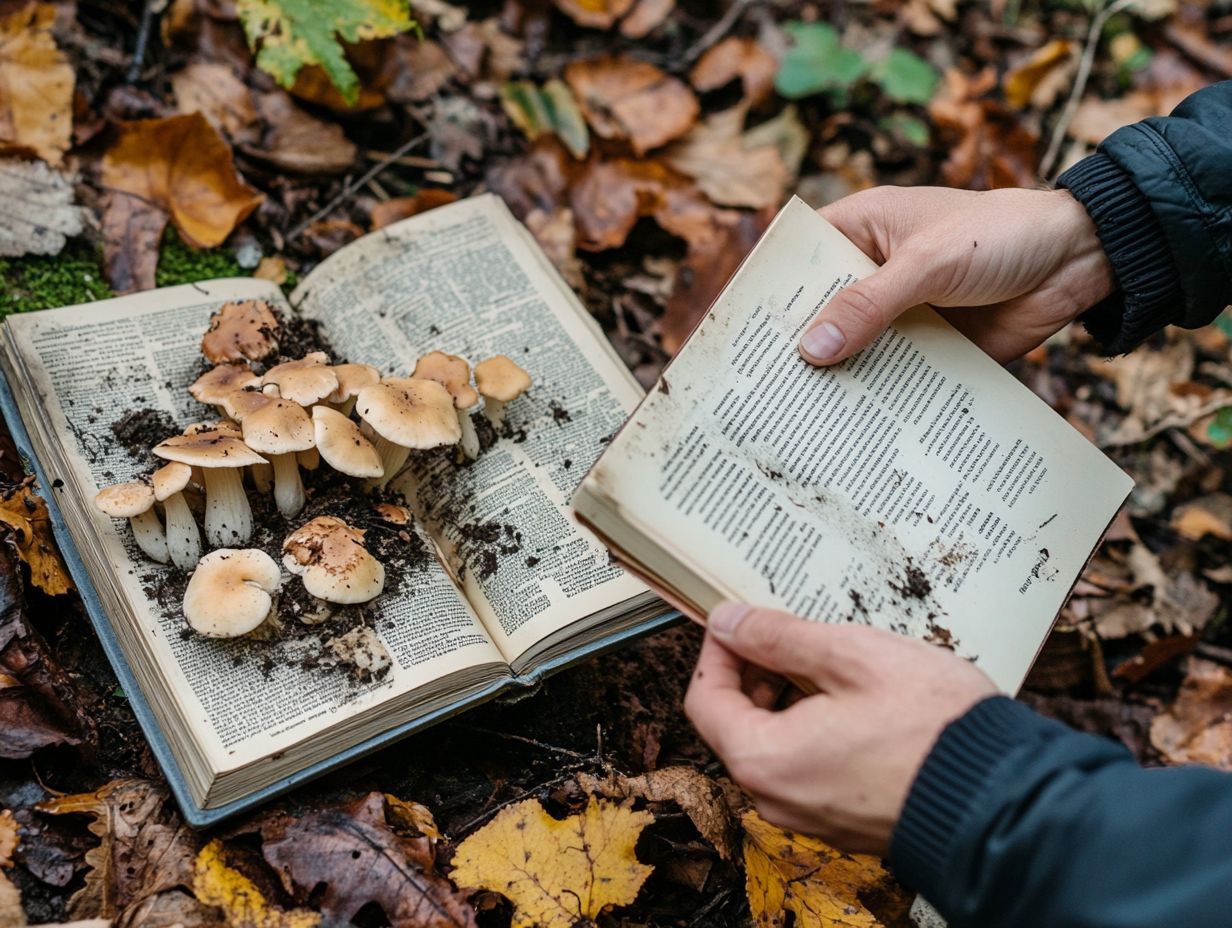
Foraging might appear simple at first glance, but many budding foragers often stumble into common pitfalls that can have dangerous outcomes, such as misidentifying edible wild plants or neglecting to recognize toxic species like Death Camas and Poison Hemlock. To help clarify these issues, exploring common myths about foraging can be very enlightening.
It s essential to grasp the distinctions between common names and scientific names for precise plant identification. By being aware of these novice mistakes, you can ensure a safer and far more rewarding foraging adventure.
Identifying and Avoiding Mistakes
Accurate plant identification is crucial in foraging. Misidentifying a plant could lead to consuming something toxic or missing out on delicious edibles. It s essential to use a good identification guide to sidestep common pitfalls.
By familiarizing yourself with the traits of both edible plants and their toxic look-alikes (plants that look similar but are harmful), you can significantly enhance your safety and enjoyment while foraging.
Using identification guides, whether in print or through mobile apps, can greatly assist you in recognizing various plant species. Joining local foraging groups or attending workshops is a wise move, as these community resources often offer invaluable insights from seasoned foragers, allowing you to learn firsthand about safe foraging practices.
Understanding where plants grow helps distinguish edible varieties. Knowing the soil type, moisture levels, and seasonal changes ensures a more fruitful and risk-free foraging experience, allowing you to confidently gather nature’s bounty.
Foraging Safety
Your safety while foraging is crucial! Be aware of what you pick, especially considering factors like food allergies, potential environmental contaminants, and the risk of misidentifying plants. Using a good identification guide can significantly reduce these risks.
By familiarizing yourself with the safety protocols and guidelines found in reputable foraging books, you can embark on your foraging adventures with both confidence and a well-informed perspective.
Follow These Safety Tips for a Successful Foraging Trip
Adhering to guidelines for safe foraging is essential for a positive experience. Familiarize yourself with local edible plants, use a trusted identification guide, and be mindful of any food allergies before you set out into nature.
Engaging in community foraging can offer invaluable insights into safe practices, allowing you to learn from the expertise of seasoned foragers. It’s important to understand the local ecosystems, as each area may harbor unique flora with varying degrees of edibility and safety.
Every region comes with its own set of foraging rules, so thorough research is vital, especially regarding seasonal availability and sustainable harvesting methods. For more insights, check out safety tips for foraging. Experienced foragers can provide tips on identifying look-alikes that might be toxic, helping you minimize risks and ensure that your foraging adventures are both enriching and rewarding.
Foraging Ethics
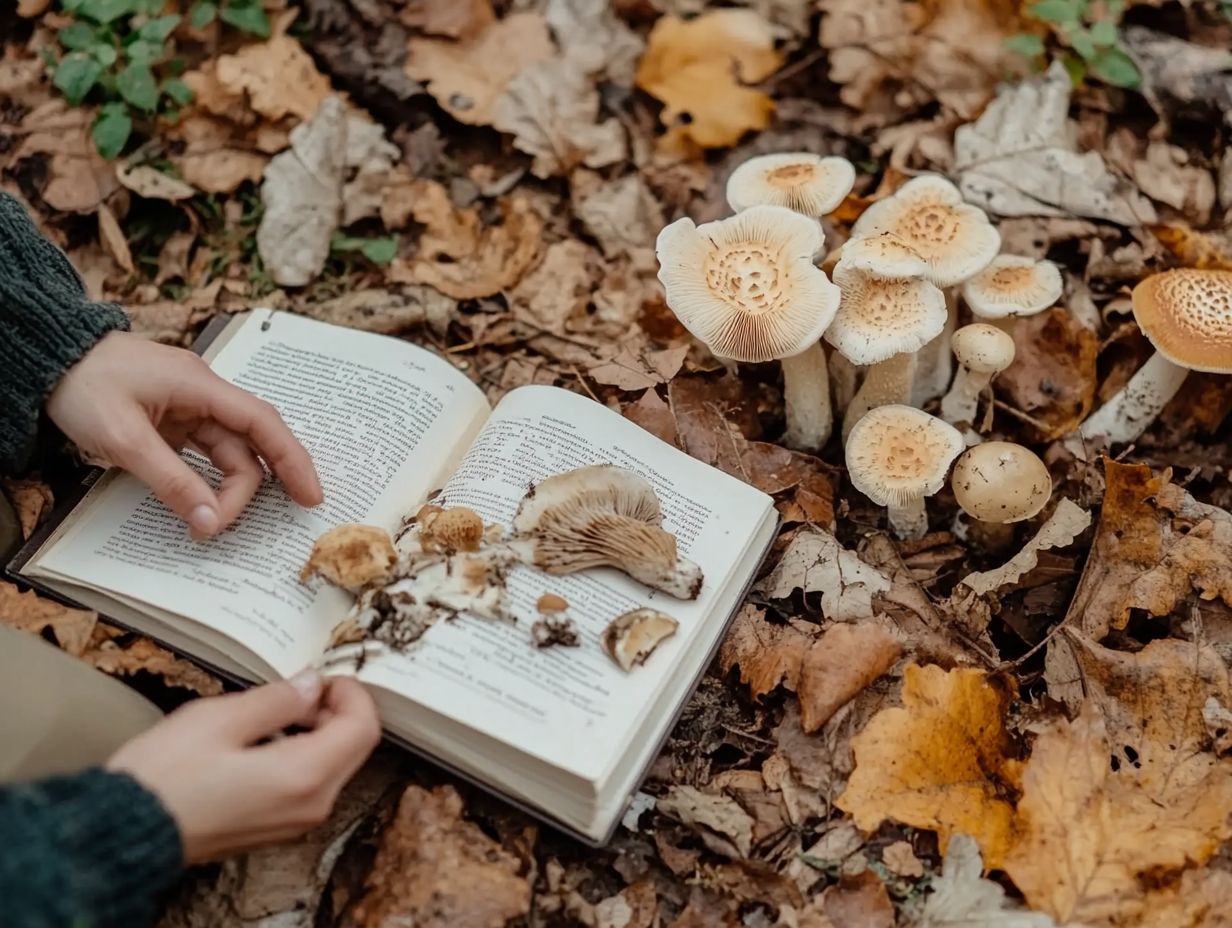
Foraging ethics hold immense importance in preserving the sustainability of wild edible plants, ensuring that future generations can continue to enjoy the fruits of foraging. It’s essential to embrace responsible practices that weigh the environmental impact and uphold respect for the community.
By grasping the delicate balance between harvesting and conservation, you can make a meaningful contribution to your ecosystem and cultivate a culture of reverence for nature.
Join the movement for sustainable foraging today!
Responsible Foraging Practices
Responsible foraging practices depend on your understanding of sustainable harvesting techniques. These methods ensure that wild edible plants aren’t overexploited, helping to preserve biodiversity and maintain the health of ecosystems.
Participating in community foraging initiatives cultivates a collective sense of responsibility and encourages shared knowledge about preserving local flora. When you adopt methods like leaving a portion of the plants behind for natural regeneration, you actively contribute to your local environment’s vitality.
Recognizing the seasonal growth patterns of various plants allows you to harvest at the optimal time, keeping the ecosystem balanced. Engaging in community efforts such as workshops or group foraging outings fosters camaraderie and provides a platform for exchanging wisdom about native species and their ecological significance.
This shared experience deepens your respect for nature and reinforces the belief that foraging should be both sustainable and collaborative.
Foraging Resources
Exciting foraging resources are at your fingertips, perfect for both novice and seasoned foragers. You ll find informative books, dedicated websites, and community classes that focus on plant identification and safe foraging practices.
By tapping into these resources, you can deepen your knowledge and elevate your foraging experiences. Connect with fellow enthusiasts who share your passion for wild edible plants.
Books, Websites, and Classes
To enhance your foraging skills, a wealth of resources awaits you, including a variety of foraging books, informative websites, and community classes. These tools provide invaluable insights into identifying edible plants and understanding local ecosystems.
Renowned resources like Peterson s guide stand out for their thorough plant identification information, while community classes offer hands-on experience and foster a spirit of shared learning.
Websites such as Wild Edibles and Forager Chef provide current information and practical tips, making them excellent companions to traditional literature. Local workshops, often led by seasoned foragers, sharpen your skills and create a sense of community, encouraging collaboration and the exchange of insights among participants.
Together, these resources enable you to become a confident forager, exploring your surroundings with respect and knowledge. This journey cultivates a more sustainable relationship with nature, enriching both your experience and the environment.
Frequently Asked Questions
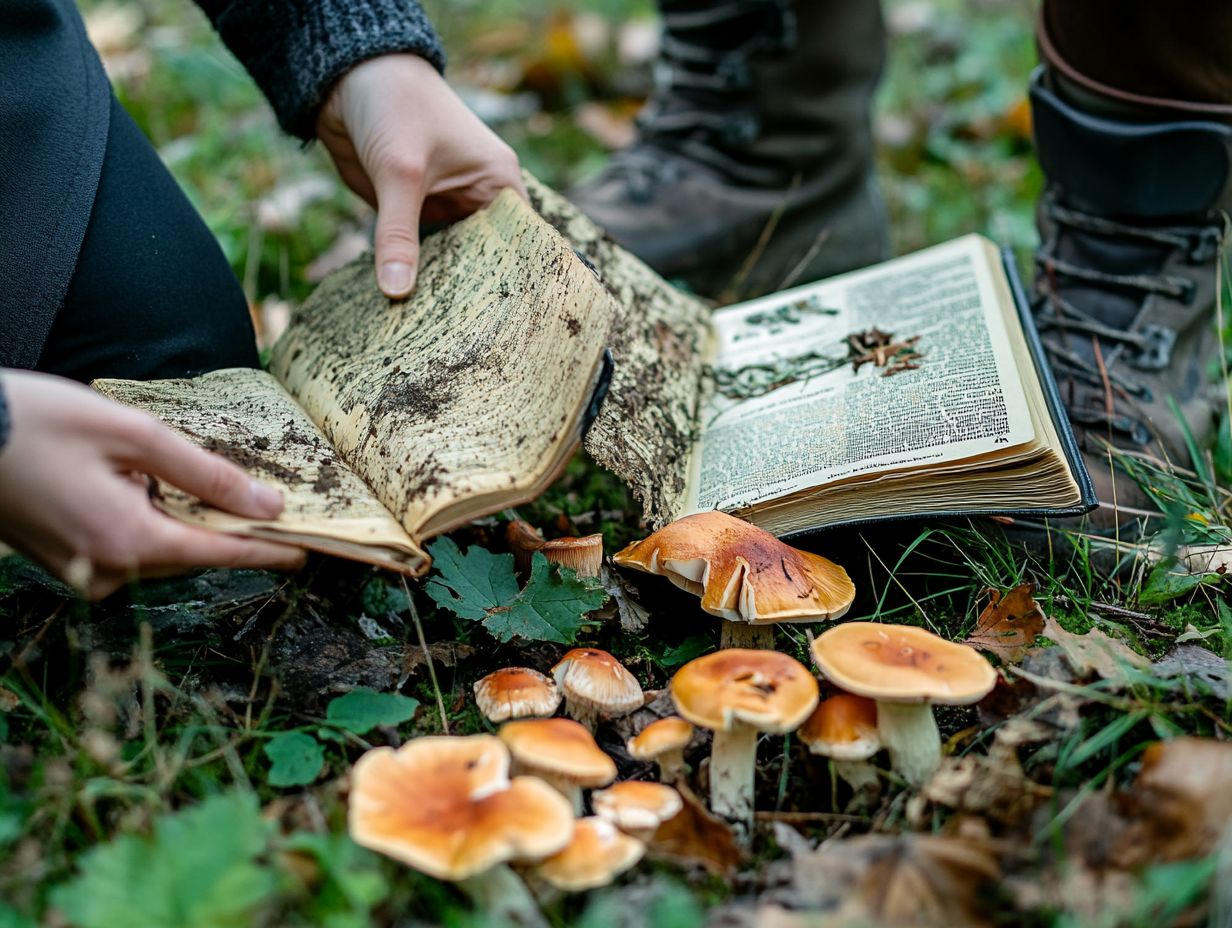
Curious about common foraging mistakes?
Some common mistakes in foraging include misidentifying plants, harvesting from contaminated areas, and damaging the environment. To learn more about these pitfalls, check out what are the most common mistakes new foragers make.
How can I avoid misidentifying plants while foraging?
To avoid misidentification, educate yourself on the plants in your area. Take a foraging class or consult a guidebook to help you correctly identify plants.
Is foraging from contaminated areas a common mistake?
Yes, foraging from contaminated areas is a common mistake. To ensure safety, it’s important to understand what beginners should know about foraging and to know the area’s history to avoid foraging in polluted spots.
What are the consequences of damaging the environment while foraging?
Damaging the environment while foraging harms local habitats and disrupts ecosystems. This can have serious consequences, including destroying the habitats of native plants and animals and potentially harming the balance of nature.
Why is it important to forage ethically?
Foraging ethically means respecting the environment and the plants you are harvesting. Protect our precious ecosystems every small action counts!
What should I do if I am unsure about the safety of a plant while foraging?
If you are unsure about the safety of a plant, err on the side of caution and do not consume it. It s always better to be safe than sorry when it comes to foraging for food.
